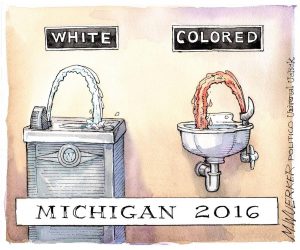
http://www.usnews.com/opinion/blogs/policy-dose/articles/2016-04-14/theres-a-huge-health-equity-gap-between-whites-and-minorities
Earlier in April, U.S. News printed an article about the racial disparities that can be found in healthcare. This article was suitably titled “Being Black is bad for Your Health.” In the article, the authors compared two communities; one being an affluent white neighborhood and the other being a primarily poor black neighborhood. The comparison revealed that the community that was primarily affluent and white on average had a life expectancy rate around 10 years higher than that of the community that was primarily poor and black. The differences revealed between the communities did not stop at just the mortality rates, but were also exhibited through rates of obesity, asthma, and teen pregnancy. Some of the major points that were highlighted throughout the article were the differences in healthcare between people of color and their white counterparts. Specifically, the article talked about the comparison between the treatments that white people received from physicians and the treatments that people of color received from physicians. Alexander Green, an assistant professor at Harvard and director of the Disparities Solution Center at Massachusetts General Hospital, studied with other researchers the racial disparities in health and discovered an “unconscious bias” that existed in physician behavior towards their patients. Such behavior seemed to extend as far as physicians suggesting more aggressive medications for ailments such as chest pain to a white patient than they would to a patient who is black.
I came across this article as a part of reading assignment that was assigned to me and my classmates in my Freshman Seminar “Is Your Zip Code Your Destiny? Exploring the Social Determinants of Health.” What I found most interesting when reviewing this article was the parallel between the issues that exist in modern day medicine and the issues in historical living laboratories that we have discussed in our Race and Living Laboratories class. What caught my eye in particular, was the noted difference between the recommended treatments provided to black patients and the more aggressive recommended treatments provided to white patients according to Alexander Green and his fellow researchers’ study. This reminded me of the discussion that we had in class about the historical perspective of physicians neglecting to provide blacks with necessary treatments throughout time and in particular when conducting human experimentation on black people throughout history. In an attempt to reason why physicians might not be inclined to recommend aggressive treatments to patients of color, I recalled what we had talked about in class about the acclaimed “scientifically proven” idea in history that blacks have a much higher tolerance to pain that their white counterparts. As we’ve learned in class, this idea was accepted in science as fact and in turn allowed for many scientists, including the notoriously known Dr. Marion Sims, to subject blacks to cruel scientific treatments and experiments. I found it supremely interesting that there might be a connection or perhaps even a paralleled way of thinking between this archaic notion of higher racial pain tolerance and the medical distribution of lesser aggressive treatments based on race.
Additionally, I thought about the discussion my classmates and I had in class about Ellis Island and how new immigrants would be turned away from America’s doorstep because they fell under the Class C bloc of access denial. The Class C block was designated for those who, although not sick now, were liable to needing healthcare resources in their future years from the American government. In class we discussed that the idea of rejection based on the probability that one will need support later in life stems from the American perception that there are not enough resources for us all with “us” being defined as American born citizens. Taking this view into context, I can picture how the “unconscious behavior” of the physicians in Alexander Green’s research could be under the influence of this notion when recommending the treatments.
 http://usuncut.com/class-war/politico-flint/
http://usuncut.com/class-war/politico-flint/